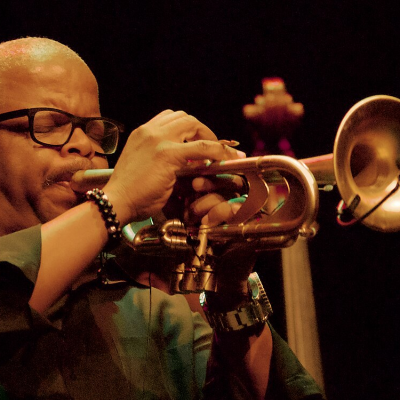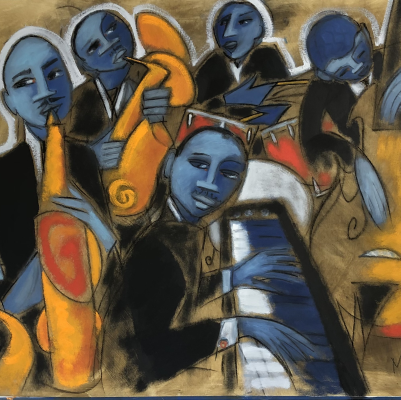.
.
photo by Inayat Ullah via Pexels.com

.
.
“Creativity takes courage.”
-Henri Matisse
.
___
.
Dear Readers:
…..This isn’t intended to be a political piece, rather it is meant to engender a response to America’s current politics. However, I can’t help but begin with these thoughts; I find what is occurring in this country to be startling – the dismantling of social and governmental institutions Americans have worked for generations to create and maintain is dark and disturbing. The outright lies and boorish behavior coming from the White House, and the hate, the ignorance, the petty retribution, the hypocritical sycophants, the needless dismantling of relationships with foreign countries in need of our aid and with democratic countries – (our allies!) – fighting for survival, and the sheer chaos that comes from all of this is enough to profoundly concern anyone holding democratic ideals. Given all of this negative energy, it is easy to retreat from the fight, and from the world.
…..As awful as all of this feels, I am aware that we can’t consume ourselves with events that are out of our control. That is what our elected representatives are hired to do, and they must be held accountable for being so. Our system of self-governance offers us a solution when they abandon their duties or abuse them – voting them out of office. So, for now I have taken on the attitude of being appropriately informed enough to know when it is time to mobilize politically.
…..I understand the risk of being vocal about America’s current situation, including the potential of alienating readers, but being appropriately engaged is required now from all who care about preserving democratic principles and institutions, and to do so in our most effective ways.
…..Because so many visitors to Jerry Jazz Musician are “creatives,” this message is written in hopes that it will especially connect with you. As we know, times like these can open the door for personal creative energy to flow more freely, and that energy is needed now to combat the sinister and the ominous, and to, in the words of the honored journalist Bill Moyers, help fellow citizens “pierce the mundane to find the marvelous.”
…..For my part, I have become inspired to host salons in my home in Portland, Oregon that bring together musicians, artists, and devotees for the purpose of building community and deepening friendships, and to be reminded of the beauty and spirit residing within the people living in our own neighborhoods. And, I will be doing more in the way of inviting writers, poets and artists to submit their work to Jerry Jazz Musician – another major collection of jazz poetry, for example, as well as an ekphrastic poetry challenge. Other ideas are formulating. (Stay tuned for more on that).
…..Of course, mine is a very small contribution toward building the creative energy necessary to help change people’s perspective of their world. But it’s my way of doing so. To confront these extraordinarily challenging times, I humbly offer these suggestions for concerned creatives to consider activating:
…..-If you are a musician, compose what you are feeling and find a “street corner” on which to share it with us – even if it feels like no one is listening. (Many are).
…..-If you are a writer, join a writer’s group and hold readings. Test yourself. Examine where your writing is taking you in the face of this chaos, and discover new publications to submit to and new audiences to share your work with. Wherever possible, be public with your endeavors – regularly share news of your efforts with family, friends, and on social media.
…..-If you are an artist, when the opportunity arises take your canvas to the public square so we can be witness to and better appreciate your creative process and soul.
…..-If you are a poet, find a community of poets in your neighborhood to meet and read with. Encourage coffee houses and bars to hold regular poetry readings. Read it alongside musicians if you can. And, through your work, show journals who publish poetry you understand that, in Salman Rushdie’s words, “A poet’s work is to name the unnamable, to point at frauds, to take sides, start arguments, shape the world, and stop it going to sleep.”
…..-If you are a fan of the arts and have room in your home or business, invite creative artists and neighbors into them as a way to build community through common interests. Buy a painting, a framed photograph, a sculpture – and be certain they were created by a living, breathing human.
…..-Support venues in your community that host live music, theater and other community events, and take someone who can’t afford the ticket with you. Become a member of the local arts organization whose mission you believe in.
…..-Use your local public library.
…..-Support and subscribe to publications that have journalistic integrity and whose mission is to report (and expose) the truth. Buy a subscription to your local newspaper.
…..-Help keep the publishing and recording industries alive (flawed as they may be). Buy books at your local bookstore and packaged recorded media from the record shop in town. Doing so will help keep local creative businesses solvent while also generating some actual revenue for writers and musicians.
…..-Support the small local merchant who can supply our life needs with a human touch while also providing employment for your neighbor, and be mindful that the product selection and décor is an extension of the merchant’s own creative spirit and personal integrity. (Try finding that at some dot-com merchant).
…..-If you can afford to do so, travel and mingle with creatives outside your neighborhood. While traveling, go to museums, theater, and clubs that present music of any kind. And leave a coin or two in the busker’s hat along your evening stroll.
.
…..I get it. There’s a lot here. And while these actions can be important everywhere, they would be especially so in Florida and Texas and Tennessee and Ohio and Pennsylvania. In the Carolinas and Michigan and Missouri and Wisconsin and Arizona.
…..My hope is that you will consider putting yourself out there. Expose your art to those who may not yet comprehend its power. Use your creativity to be a voice opposing arrogance, corruption, and hate, and to remind those around you of the complexity of this world, and the beauty within it.
…..Creatives: the voices, actions and courage of people like those who read and contribute to this publication are needed.
…..This is our time!
,
Joe Maita
Editor/Publisher
.
.
photo by Rhonda R. Dorsett

.
.
___
.
.
Listen to the 1964 of Art Blakey and the Jazz Messengers perform trumpeter Freddie Hubbard’s composition “The Core,” from the Blue Note album Free For All, with Hubbard (trumpet); Blakey (drums); Cedar Walton (piano); Wayne Shorter (tenor saxophone); Curtis Fuller (trombone); and Reggie Workman (bass). [Universal Music Group]
Hubbard dedicated the song to CORE (Congress of Racial Equality) and according the Nat Hentoff’s album liner notes, “Hubbard’s admiration of that organization’s persistence and resourcefulness in its work for total, meaningful equality.” Hubbard explains that “they’re getting at the core, at the center of the kinds of change that have to take place before this society is really open to everyone. And more than any other group, CORE is getting to youth, and that’s where the center of change is.” The piece was called that way also because Hubbard thought that the musicians “got at some of the core of jazz – the basic feelings and rhythms that are at the foundation of music.”
.
.
___
.
.
Click for:
More poetry on Jerry Jazz Musician
“Bluesette,” Salvatore Difalco’s winning story in the 67th Jerry Jazz Musician Short Fiction Contest
Information about how to submit your poetry or short fiction
Subscribe to the (free) Jerry Jazz Musician quarterly newsletter
Helping to support the ongoing publication of Jerry Jazz Musician, and to keep it commercial-free (thank you!)
.
___
.
.
Jerry Jazz Musician…human produced (and AI-free) since 1999
.
.
.




































This reminds me of how much words matter–also that art, poetry, and music matters
and that democratic Americans won’t just take the Maga movement sitting down.
Very nicely worded, Joe.